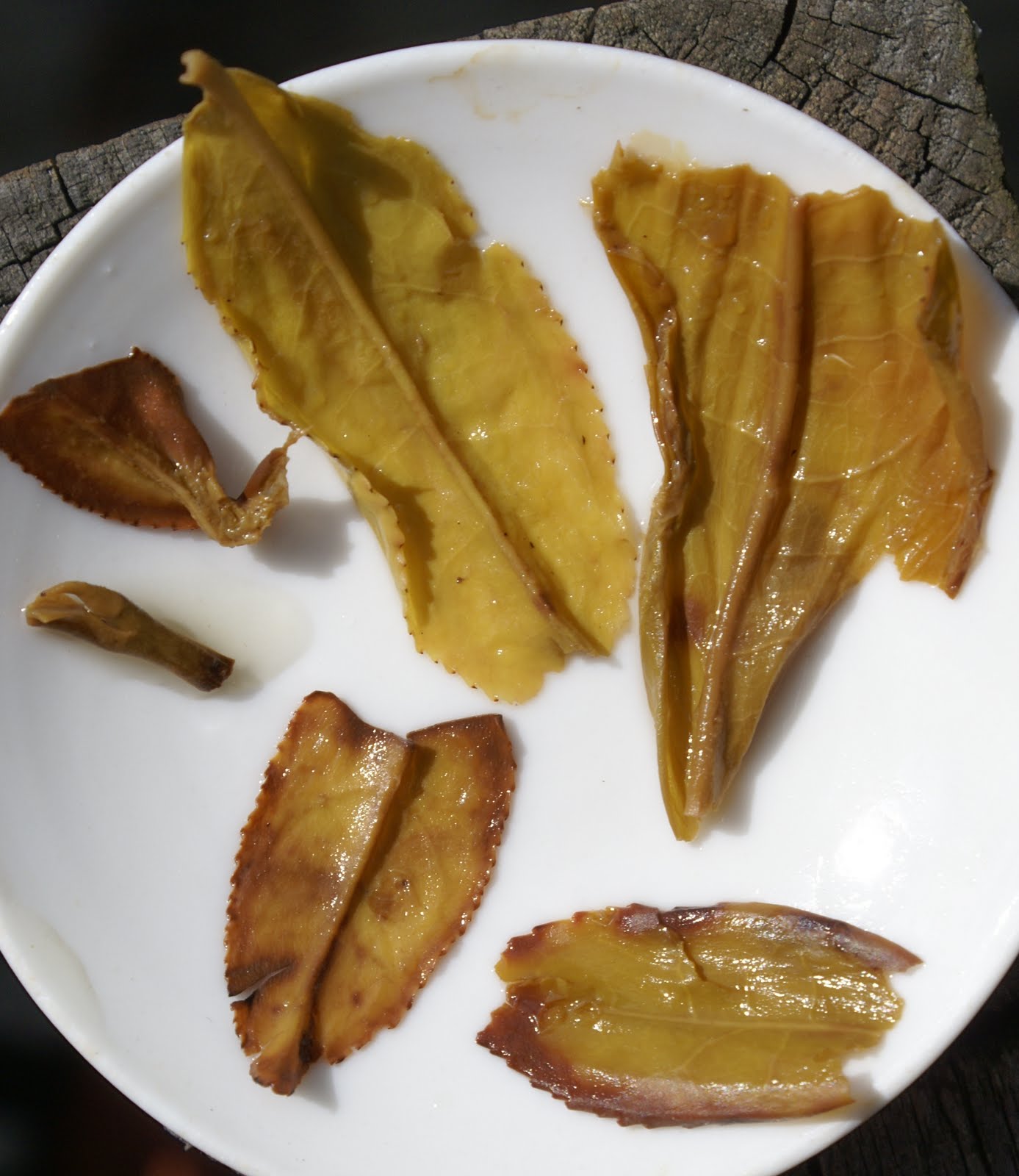Getting Baijiguan
Posted on 6 September 2010
I got this nice gift from a fellow tea lover in Poland: four neat 8-gram packages of Baijiguan. China’s most famous oolong tea, the king of Wuyi cliff tea, still made from the original millennial tea trees or their direct clones.
Incidentally this is one tea I’ve never tasted before. I’ve had the other three of the Four Famous Bushes: Dahongpao, Tieluohan and Shuijingui, but not Baijiguan. On anybody’s way of tea, it’s good to have a goal out there to reach.
So it was with excitement that I opened the bag. It will take a better grasp of Chinese than mine to decipher the info on the bag; all I know is that this tea is from 2010. At first sight this is a very surprising tea. It has a very low roast and the leaf is a mix of various light greens – way less oxidised than the norm in Wuyi. Apparently this is typical of Baijiguan, but how to approach this? (See here for photos of Shuixian, a typical Wuyi tea). The leaf aroma is very subdued with hay and toasted bread.
On my first attempt I dumped the entire bag – 6.8g of leaf after sorting out the debris – into a 100ml gaiwan. Treated like all oolongs with boiling water and perhaps 40 seconds of steeping this tea was frankly unpleasant. A murky light beige colour, very little aroma in the cup and a completely flavourless palate ending rather bitter. The next few infusions were no better. I had obviously mishandled this tea but was nonplussed by the profile with a mixture of low and medium oxidation leaves this tea tasted like an unsuccessful modern Darjeeling. To save the day I quickly brewed some 2008 Shuijingui – Baijiguan’s marginally less famous sibling – that I bought from Dragon Tea House. What a good tea! Wuyi at its chocolatey, honeyed, high-roasted best but also with an unusually intense plummy fruitiness – outstanding.
It was only after 7 or 8 infusions, with the leaves fading away that the BJG revealed some pleasant low key elegance and an almondy flavour distantly reminiscent of Dancong oolong. So there was hope, I thought. For my next attempt I halved the dosage and used an excellent quality shipiao clay pot from Taiwan I usually dedicate to Dancong from Tea Masters. Following my experience with Dancong I also used very brief infusions at the beginning: starting with perhaps 8 seconds. The result was far, far better than my first attempt in gaiwan. Very light in colour. Partly thanks to the clay pot that emphasised the fruity notes rounded off the whole, but partly after the brewing parameters helped the tea’s finesse come forward, this Baijiguan now showed some real textural interest with light notes of white almonds, dried fruits, a bit of dried herbs; bitterness was never allowed to dominate in any of the ten infusions. The patience was also good, although in all truth it’s a rather light tea that never delivered a very intense flavour.
I still have my reservations about this: looking at the expired leaf I think the oxidation is a bit random, with some bruised leaves and some totally green; it just doesn’t seem so well handled. The lack of flavour intensity especially at mid-palate is a problem. But when ‘got right’, this tea at least has personality. It comes closer to a Dancong than other tea varieties in Wuyi.





